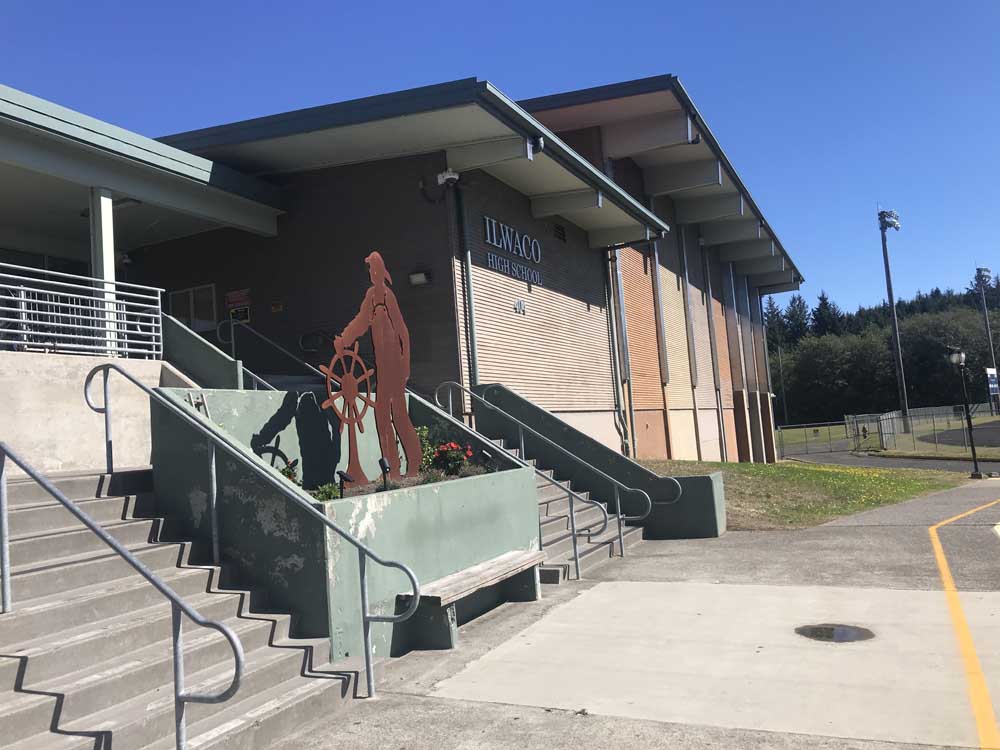OBSD continues pursuit of state seismic dollars
Published 3:08 pm Monday, November 25, 2024

- Ocean Beach School District is taking preliminary steps toward a new 6-12 school in Ilwaco that would replace the current Ilwaco High School and Hilltop Middle School if ultimately constructed.
ILWACO — The multi-year pursuit by the Ocean Beach School District for state dollars to address seismic vulnerabilities at its Ilwaco schools has entered a new stage.
Trending
Utilizing grant funding, OBSD is expected to contract with an architect by the end of this year or very early in 2025 for design of a 6-12 school in Ilwaco on district-owned property. It’s the second phase of a journey the district first began with Washington’s Office of the Superintendent of Public Instruction (OSPI) in 2022, which could ultimately result in the state contributing the lion’s share for a new earthquake-resistant school.
It was just over two years ago that OBSD was chosen as one of a select few school districts to participate in the state’s new School Seismic Safety grant program, which provides funds to school districts to cover the bulk of the costs of retrofitting or relocating schools situated in high seismic areas or tsunami inundation zones. The OSPI-ran program was established by the Washington State Legislature that year with an initial $100 million in funding.
During its most recent bond proposal, in the spring of 2022, the district was aware these OSPI funds might be available further down the road. Among many other projects, the bond would have funded seismic retrofitting at IHS.
Trending
‘We are looking for practical, long-term buildings that are easy to maintain and will help us keep our kids in these buildings for 50-100 years.’
Amy Huntley, Ocean Beach School District superintendent
Although voters ultimately shot down the bond measure by a wide margin, the fact OBSD ran the bond in the first place and attempted to fund the upgrades with local tax dollars improved its position with the state.
“When we failed the bond, we knew in that process that this OSPI seismic thing was sort of happening in the background, and we had high hopes that we would be able to piggyback into that,” said OBSD Superintendent Amy Huntley last week. “And it turns out that by running and failing a bond, it put us at the top of the list.”
The district was awarded $128,750 from OSPI at the time as part of the first of the program’s three phases, which focused on conducting geotechnical surveys and architectural site assessments at the IHS and Hilltop Middle School properties. Diagnosing the condition of both the buildings and the soils they sit on is an important step in determining the scope of the upgrades that may be needed.
In addition to the robust seismic upgrades to better protect hundreds of students, teachers and staff in the event of a major earthquake, a 6-12 school would also allow the district to shrink its facilities footprint, from four to three schools. Most similarly sized school districts only operate three schools, while OBSD operates four — leading to higher maintenance costs that add up over time.
“We are looking for practical, long-term buildings that are easy to maintain and will help us keep our kids in these buildings for 50-100 years,” Huntley said. “So we really want to make sure that it’s not artsy fartsy. It can be aesthetically pleasing while still being very practical, and that’s our focus and our push.”
She noted that OBSD is not eligible to receive funding through this program to address other district facilities that are at risk of failing in the event of an earthquake, including the stadium and bus barn located next to Hilltop Middle School.
Entering a new phase
Fast-forward to this fall, and the quest for state funding has entered a more intensive stage. The district was recently awarded $3.15 million for the second phase of the OSPI program, which is focused on planning and designing the prospective school in Ilwaco.
In late October, OBSD put out a request for qualifications (RFQ) for architecture and engineering services, with the design of the 6-12 school being highlighted as the “most immediate project.” The RFQ noted that the project is being funded in phases by OSPI, with the potential for delays between phases.
A site visit for prospective firms was held Nov. 14, while the deadline for submissions was Nov. 26. The school district’s board of directors is expected to award a bid at either its December meeting or in January, Huntley said.
The district and architect are slated to present to Washington’s Capital Projects Advisory Review Board (CPARB) in February as part of a request to combine the design and construction of a project into a single contract. A general contractor would be hired by the architect during the design phase if the request is approved, acting as a construction manager who is able to advise on issues like scheduling and pricing that can lower costs in the long run.
If the request to CPARB is approved, Huntley says the plan is for a contractor to be brought on around May to begin working with the architect.
Next steps
The architect will also be tasked with leading on issues like public outreach when it comes to identifying local needs for the 6-12 school that OSPI may not be aware of.
“For example, when we [initially] went to OSPI they wanted to give us, for a 6-12 school, one music room,” Huntley said. “But in the Ocean Beach School District that’s not going to work, right? In some places that could work. That’s not going to work here. So it’s those kinds of features that we need to make sure that our public is involved with to make sure that we get what we need for our students here.”
The district hopes to go to OSPI by next fall with its plan and cost estimates for the new school, which is when the two sides would hash out the overall cost and how much the state would contribute toward the final construction phase if ultimately awarded. The legislation states that at least two-thirds of the total cost must be contributed by the state, and OBSD will be pushing for the local share to be as small as possible.
“What we’re gonna fight for will be that our local property and other things that we’re contributing will be our local share rather than cash,” said Huntley, “but whether we’ll get that or not is yet to be determined.”
Short of OSPI funding 100% of the total cost, Huntley anticipates the district will have to go to voters with either a bond or levy proposal to cover any remaining costs, albeit at a significantly reduced cost compared to if OBSD was going it alone.
Examining elementary options
In a separate effort via a Federal Emergency Management Agency grant and in coordination with the Washington Emergency Management Division, the district is currently examining its options to better prepare OBSD’s two elementary schools in the event of an earthquake and subsequent tsunami.
Unlike the schools in Ilwaco, both Long Beach Elementary and Ocean Park Elementary are located squarely in the inundation zone and on more liquefiable soils. A tsunami triggered by a massive Cascadia Subduction Zone earthquake could reach the schools as soon as 15-20 minutes following the quake.
The scoping grant from FEMA does not cover the cost of construction like the OSPI program is designed to, Huntley said, and revolves around identifying potential solutions at the elementary schools and determining how feasible they actually are. OBSD has used the funds from FEMA to hire architects as well as structural and geotechnical engineers to evaluate a host of options, from rebuilding or relocating the schools to erecting vertical evacuation towers at or near school grounds.
“We’re just kind of exploring all the options and looking at feasibility; how we could get it funded, what makes sense, is it even possible,” said Huntley, noting that the elementary schools could also qualify for seismic funds from OSPI further down the road. “That process is more theoretical and more focused on just options.”
OBSD is already working with the City of Long Beach on the latter’s effort to build a vertical evacuation tower on district-owned property behind LBE. Huntley said the district could do something like a lot line adjustment and give a lot to the city, or set aside a lot in perpetuity so FEMA is assured that the lot is secure.
For both the OSPI seismic program and this FEMA grant, Huntley expects there to be rigorous community involvement and outreach.
“Community involvement in the coming phases will be really important,” she said. “There will be engagement from architects and from emergency management regarding what our risk really is.
“I think in their day-to-day lives the public hopefully isn’t spending all their time worrying about tsunamis … but the risk really is quite high at both our elementary schools and so we want to make sure that should that happen on our watch that we’re prepared to keep the kids safe.”









